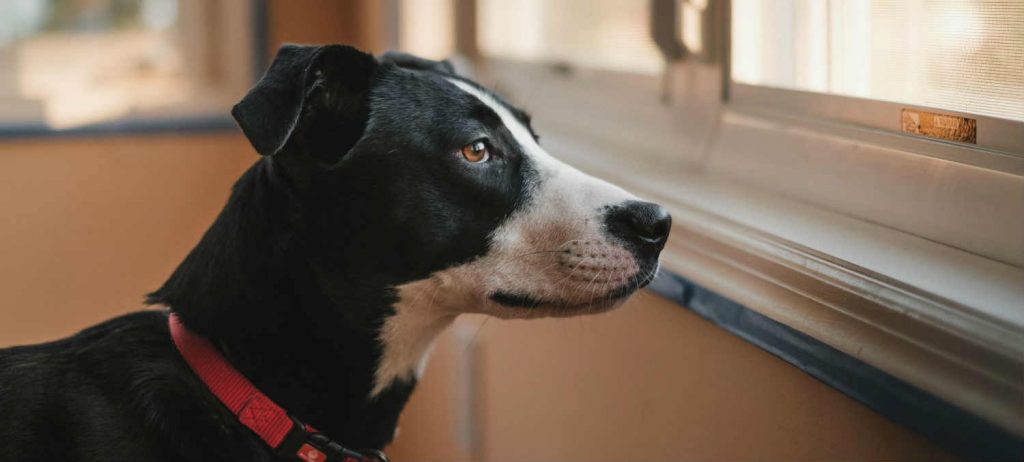Hi Eva,
I can’t say why canine separation anxiety has developed in your dog and by the content of your question, I assume you aren’t aware of any stressful events in the past that could have prompted this. The first thing I would recommend is for you to visit your veterinarian and have a physical examination and wellness testing performed. We want to make sure there is not an underlying medical condition that could be contributing to this issue. An example may be that arthritis has developed, which has lead to weakness and frequent slipping on hardwood floors. This can make the house seem really scary and would make sense for the problem to just slowly appear when it wasn’t there before. Another possibility is that there is a source of pain which is causing distress. So I would strongly suggest that you rule out any medical conditions.
If there is no medical basis for it, then there are a few ways to deal with separation anxiety in dogs. There’s the really long way and the really short way. It is vital to work with your veterinarian or a veterinary behaviorist to achieve success when treating this condition.
The long way is doing something called desensitization and counter conditioning therapy. You can look this up on websites and YouTube for examples of how to do this. Desensitization means exposing him to the anxiety-creating stimulus in small doses, such as leaving him for 30 seconds, then 60 seconds, then longer and longer each time. For instance, your dog will start to get anxious when you get your jacket on and while you grab your keys and put your shoes on. You can do all of these things and then sit on the couch and watch TV for an evening. The anxiety that these cues cause will become diminished because they don’t necessarily mean that you’ll be leaving your dog on its own anymore. Counter conditioning means giving him treats and praise while exposing him to the anxiety-creating stimulus so that he is happy in these moments rather than anxious. For example, you can feed a treat as you walk out the door and then 5 seconds later, come back in, take off your jacket and shoes, and stay home. Keep doing these things more often and for longer periods of time until their anxiety-creating effect is diminished.
Reading this, you can see how difficult this could be given the type of scenario you’re dealing with. This is why this is such a challenging way to affect behavior change.
The other way is giving him an anti-anxiety medication. There are medications that help tremendously in most cases and are very safe. If the anxiety is ever present or daily, such as separation anxiety from you leaving him alone in the house, it works really well. If the anxiety is very acute and intense, such as fear when another dog approaches him, thunderstorms, or leaving him in specific circumstances, it is not as effective. I try not to recommend drugs for behavioral modification because most people have a natural unease with this plan, but in cases where the anxiety is really impacting your dog’s quality of life in a negative way, I think it is very important to consider.
Some people have requested sedatives, such as a drug called acepromazine, for very intense periods of anxiety, such as car/air travel, thunderstorms, nail trimmings, etc.
I hope this helps. Good luck.
Dr. Clayton Greenway
